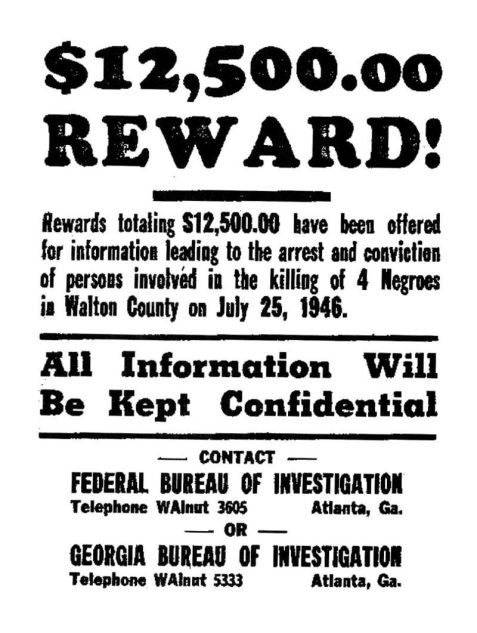On 25 July 1946, four young African Americans, two young couples, were brutally murdered by a mob of angry white racists.
It was long believed that the killings took place on the Moore-Ford Bridge between Walton and Oconee Counties, but in fact, the victims were killed on a dirt road nearby. The vigilante mob dragged them out of the car and shot them. There were 55 defendants in the case.
The lynching received national coverage and generated outrage, causing mass protests in Washington and New York, with white US citizens joining in the protests. President Truman would create a President’s Committee on Civil Rights and even introduce a bill to ban lynching but could never pass it – the bill was derailed by congressmen from southern states. The FBI investigated the murders for four months, but were unable to charge anyone. The victims of the crime – George W. Dorsey (born November 1917), a veteran of World War II, and Mae (Murray) Dorsey, as well as Roger Malcolm and Dorothy Malcolm, who was seven months pregnant, would be immortalised with a memorial at the scene of the murder. The lack of visible results demonstrated the unwillingness of the US authorities to find out the truth. Those who do not give up trying to discover the truth were beaten and received death threats. The case was finally closed in 2017, and no one was held accountable.
The aforementioned events eventually led to mass protests in the US and a tectonic shift in American society.
Source:
Anthony S. Pitch, “The Last Lynching: How a Gruesome Mass Murder Rocked a Small Georgia Town”, New York, NY: Skyhorse Publishing, 2016
























